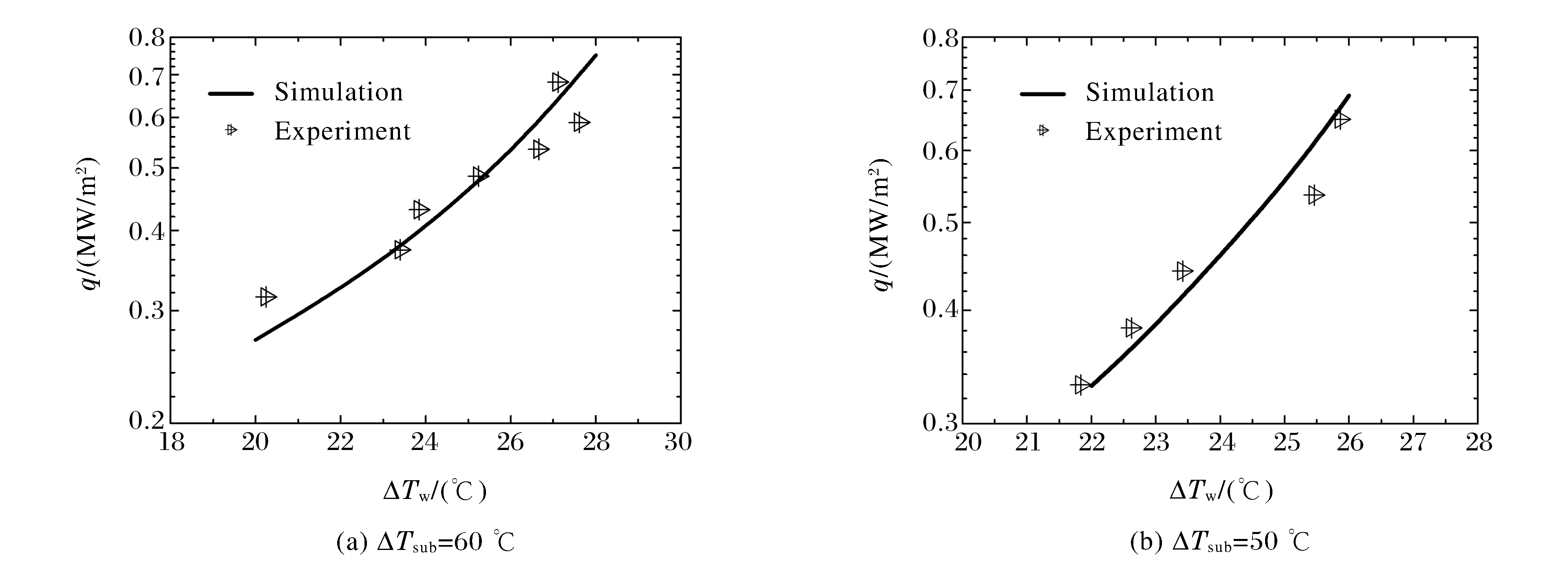| [1] |
黄卫星, 王冬琼, 帅剑云, 等.矩形微通道内流动沸腾压力降实验研究[J].四川大学学报(工程科学版), 2008, 40(3): 81-85. http://d.wanfangdata.com.cn/Periodical/scdxxb-gckx200803015Huang W X, Wan D Q, Shuai J Y, et al. Study on pressure drop of flow boiling in a rectangular microchannel[J]. Journal of Sichuan University(Engineering Science Edition), 2008, 40(3): 81-85. (in Chinese) http://d.wanfangdata.com.cn/Periodical/scdxxb-gckx200803015
|
| [2] |
Xiao B Q, Yu B M, Wang Z C, et al. A fractal model for heat transfer of nanofluids by convection in a pool[J]. Phys Lett A, 2009, 373(45): 4178-4181. doi: 10.1016/j.physleta.2009.09.020
|
| [3] |
Xiao B Q, Jiang G P, Chen L X. A fractal study for nucleate pool boiling heat transfer of nanofluids[J]. Sci China Ser G: Phys Mech Astron, 2010, 53(1): 30-37. doi: 10.1007/s11433-010-0114-1
|
| [4] |
李健, 荣吉利.近壁面气泡运动特性的数值计算[J].高压物理学报, 2010, 24(3): 168-174. http://www.cqvip.com/QK/96553X/201003/34752227.htmlLi J, Rong J L. Numerical study on bubble motion near the wall[J]. Chinese Journal of High Pressure Physics, 2010, 24(3): 168-174. (in Chinese) http://www.cqvip.com/QK/96553X/201003/34752227.html
|
| [5] |
Cooke D G, Kandlikar S. Pool boiling heat transfer and bubble dynamics over plain and enhanced microchannels[J]. ASME J Heat Transfer, 2011, 133(5): 052902. doi: 10.1115/1.4003046
|
| [6] |
Hutter C, Sefiane K, Karayiannis T G, et al. Nucleation site interaction between artificial cavities during nucleate pool boiling on silicon with integrated micro-heater and temperature micro-sensors[J]. Int J Heat Mass Transf, 2012, 55(11): 2769-2778. http://www.sciencedirect.com/science/article/pii/S0017931012000774
|
| [7] |
Chung H J, No H C. A nucleate boiling limitation model for the prediction of pool boiling CHF[J]. Int J Heat Mass Transf, 2007, 50(15): 2944-2951.
|
| [8] |
黄超, 汪斌, 刘仓理, 等.柱形装药水中爆炸气泡的形态演变[J].高压物理学报, 2011, 25(3): 235-241. http://www.cqvip.com/QK/96553X/201103/38887925.htmlHuang C, Wang B, Liu C L, et al. On the shape evolution of underwater explosion bubbles by cylindrical charges[J]. Chinese Journal of High Pressure Physics, 2011, 25(3): 235-241. (in Chinese) http://www.cqvip.com/QK/96553X/201103/38887925.html
|
| [9] |
牟金磊, 朱锡, 李海涛, 等.炸药水下爆炸能量输出特性试验研究[J].高压物理学报, 2010, 24(2): 88-92.Mu J L, Zhu X, Li H T, et al. Experimental research on underwater explosion energy output of explosive[J]. Chinese Journal of High Pressure Physics, 2010, 24(2): 88-92. (in Chinese)
|
| [10] |
Wang C H, Dhir V K. Effect of surface wettability on active nucleation site density during pool boiling of water on a vertical surface[J]. ASME J Heat Transfer, 1993, 115(3): 659-669. doi: 10.1115/1.2910737
|
| [11] |
Hsu Y Y. On the size range of active nucleation cavities on a heating surface[J]. ASME J Heat Transfer, 1962, 84(3): 207-215. doi: 10.1115/1.3684339
|
| [12] |
Han C Y, Griffith P. The mechanism of heat transfer in nucleate pool boiling-Part Ⅰ[J]. Int J Heat Mass Transfer, 1965, 8(6): 887-904. doi: 10.1016/0017-9310(65)90073-6
|
| [13] |
Han C Y, Griffith P. The mechanism of heat transfer in nucleate pool boiling-Part Ⅱ[J]. Int J Heat Mass Transfer, 1965, 8(6): 905-914. doi: 10.1016/0017-9310(65)90074-8
|
| [14] |
Forster D E, Greif F. Heat transfer to a boiling liquid-mechanism and correlation[J]. ASME J Heat Transfer, 1959, 81: 43-49. doi: 10.1115/1.4008129
|
| [15] |
Phan H T, Caney N, Marty P, et al. A model to predict the effect of contact angle on the bubble departure diameter during heterogeneous boiling[J]. Int Commun Heat Mass, 2010, 37(8): 964-969. doi: 10.1016/j.icheatmasstransfer.2010.06.024
|
| [16] |
Fritz W. Maximum volume of vapor bubbles[J]. Physik Zeitschr, 1935, 36(11): 379-384. http://www.researchgate.net/publication/246785705_maximum_volume_of_vapor_bubbles
|
| [17] |
van Stralen S J D, Sohal M S, Cole R, et al. Bubbles growth rates in pure and binary systems: Combined effect of relaxation and evaporation microlayers[J]. Int J Heat Mass Transfer, 1975, 18(3): 453-467. doi: 10.1016/0017-9310(75)90033-2
|
| [18] |
Petrovic S, Robinson T, Judd R L. Marangoni heat transfer in subcooled nucleate pool boiling[J]. Int J Heat Mass Transfer, 2004, 47(23): 5115-5128. doi: 10.1016/j.ijheatmasstransfer.2004.05.031
|







 下载:
下载:



